Lisbon
Save for Later
Share
Lisbon
Ariel
Lisbon is a total gem of a city where traditional heritage meets modern vibrancy, and this is nowhere more evident than in its food and culture scene. The city is a bustling metropolis that offers a unique blend of the old-world charm with contemporary flair, making it a must-visit destination for culture enthusiasts and foodies alike.
Lisbon's culinary scene is a reflection of Portugal's rich maritime history, with an emphasis on fresh seafood. Cod (bacalhau) dishes are ubiquitous, served in various forms such as "Bacalhau à Brás" (shredded cod with onions, potatoes, and eggs). Sardines, especially grilled sardines (sardinhas assadas), are another staple during the summer months. But Lisbon's food scene isn't limited to seafood; "Alheira," a type of sausage made from meats other than pork, and "Bifana," a traditional pork sandwich, are also popular among locals and tourists.
Pastries and sweets hold a special place in Lisbon's culinary landscape, with "Pastéis de Nata" (custard tarts) leading the charge. These creamy, flaky pastries originated in the city's Belém district and are a must-try for anyone visiting Lisbon. The city's coffee culture is equally noteworthy, with cafes and pastelarias dotting every corner, inviting visitors to indulge in a leisurely "bica" (espresso) paired with a pastry.
Lisbon's culture is as diverse as its culinary offerings. The city is renowned for Fado music, a soul-stirring genre characterized by its melancholic tunes and lyrics that reflect the Portuguese concept of "saudade," or longing. Visitors can experience live Fado performances in various "casas de Fado" throughout neighborhoods like Alfama and Mouraria, offering an intimate glimpse into Portugal's soul.
Art and history are woven into the fabric of the city, with numerous museums and galleries showcasing everything from contemporary art to artifacts that trace Portugal's maritime exploits. The LX Factory, a former industrial complex turned cultural hub, epitomizes Lisbon's blend of historical roots with modern creativity, hosting art studios, bookshops, eclectic boutiques, and thematic restaurants.
The city's architecture is another highlight, with the Pombaline downtown area (Baixa) offering a grid-like layout unique to Europe, majestic plazas like Praça do Comércio, and iconic monuments such as the Belém Tower and Jerónimos Monastery. The juxtaposition of traditional azulejos (ceramic tiles) adorning buildings with street art and murals in districts like Bairro Alto and Graça adds to the city's vibrant aesthetic.
Lisbon is a city that delights the senses and stirs the soul, offering a rich tapestry of food and culture that seamlessly blends tradition with innovation. Whether it's in the simple pleasure of a Pastel de Nata, the haunting melodies of Fado, or the intricate beauty of azulejos, Lisbon invites exploration and promises unforgettable experiences.
Updated ago
Save
Share
Places To See:
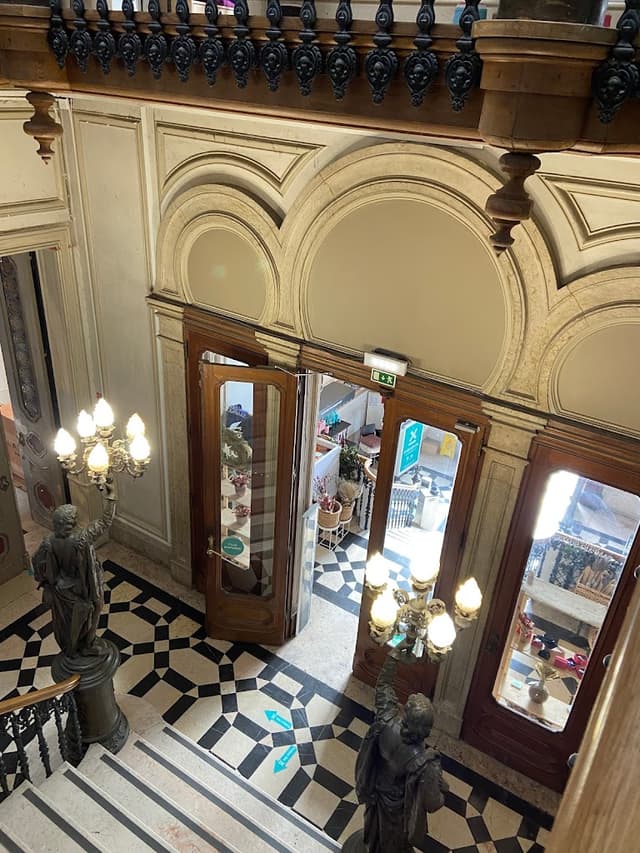
EmbaiXada
@_ariel_
A shopping gallery in a neo-Moorish building from the 1800s. Embaixada is home to many Portuguese designers and creators that have chosen to display here. The iconic XIX new-Arabian Palace, located in the groovy neighborhood of Principe Real, was turned in Sept. 2013 Into an innovative retail concept (TimeOut Idea of the Year Award), hosting a range of shops focused on Portuguese design, fashion, gastronomy and culture. The result is a meeting point of people and experiences, tradition and contemporaneity, blending heritage with the newest that Portugal has to offer. The restaurant located in the inner courtyard offers live Fado concerts on Tuesdays and sundays.
Add to
Details
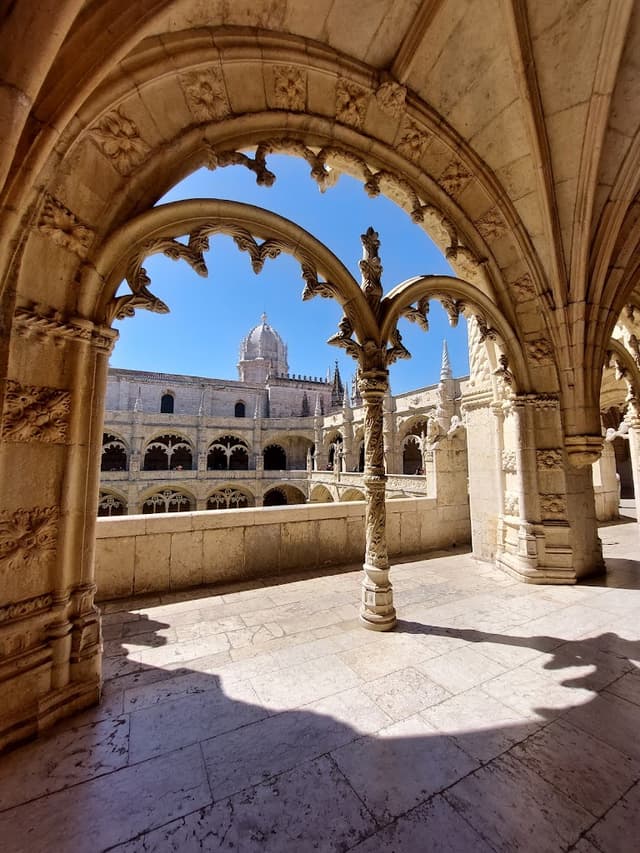
Jerónimos Monastery
@_ariel_
The Jerónimos Monastery, also called Hieronymites Monastery, is along with the Tower of Belém, one of the most visited sites in Lisbon. UNESCO declared it a World Heritage Site in 1983. This landmark is called Mosteiro dos Jerónimos in Portuguese. The religious building was designed by the Portuguese architect Diogo de Boitaca to commemorate the return of Vasco da Gama from India. The construction began on 6 January 1501 and wasn’t completed until the seventeenth century. The building is predominantly Manueline style (Portuguese late Gothic). Curiously, the monastery was built on the site of the former Ermida do Restelo, the chapel where Vasco da Gama and the rest of the sailors prayed before setting sail down the African coast to India. The Church The Church of Santa Maria is unique in the world. It is completely different from the rest. The temple has a single nave that is held up by six beautifully sculpted columns and the church seems to go on forever. The Church houses the tombs of Vasco da Gama and Luís de Camões, a Portuguese poet and writer. Cloister The Jerónimos Monastery’s two-story cloister is even more beautiful than Lisbon Cathedral’s nunnery. It is much larger and its decorative ornamentation and symbolism are breath-taking. When you explore the cloister, you’ll see the church of Santa Maria from above and the tomb of Fernando Pessoa, a renowned Portuguese writer and poet. One of the cloister’s halls is dedicated to the history of the Monastery, which is compared to the country and the rest of the world’s evolution.
Add to
Details
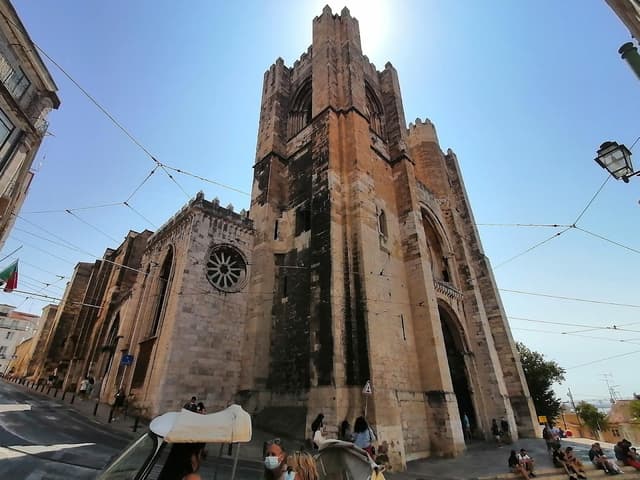
Alfama (neighborhood)
@_ariel_
The steep streets of Alfama, one of Lisbon’s oldest areas, are lined with shops selling traditional crafts and cafes. Passengers pack the historic no. 28 tram, which winds through Alfama on its way up to 11th-century São Jorge Castle. Views from Miradouro da Graça terrace stretch over the city to the River Tagus. In the evening, melancholy Fado music can be heard in some of the area's long-running restaurants.
Add to
Details
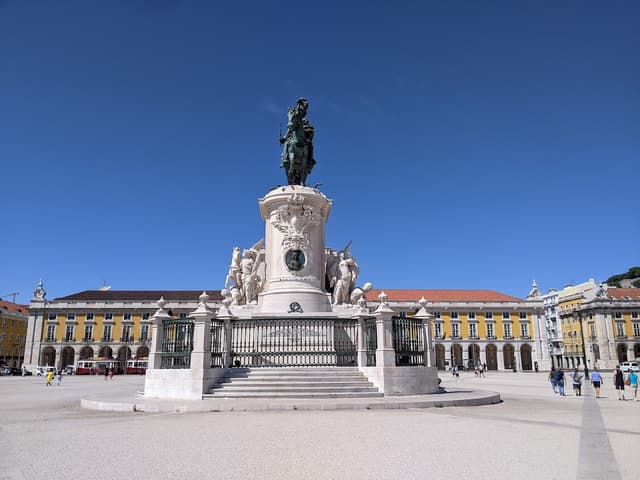
Praça do Comércio
@_ariel_
This is one of the most beautiful squares in all Europe, opening southwards onto the huge Tagus estuary. Until the era of mass aviation, this was Lisbon´s great reception hall for visitors arriving by sea even better able to enjoy its beauty from their vantage points on slowly docking vessels. It was at the dock here that the Kings and Heads of State would disembark when visiting Portugal. Prior to the 1755 earthquake, it was called the Terreiro do Paço (Royal Yard). The Royal Palace had been sited on the western side of the square since the 16th century when king Manuel transferred the court down from the Castle of São Jorge (St. George). In 1580, Filipe I of Portugal ordered the building of a new square with the work the responsibility of Filippo Terzi and Juan Herrera (the architect responsible for the Escorial). Everything was destroyed by the earthquake. The name Praça do Comércio (Commercial Square) belongs to the Pombal era and represents the new social order that the minister to king José I wanted to favour and promote: the trading, financial and bourgeois classes that had contributed so much to rebuilding the city.
Add to
Details
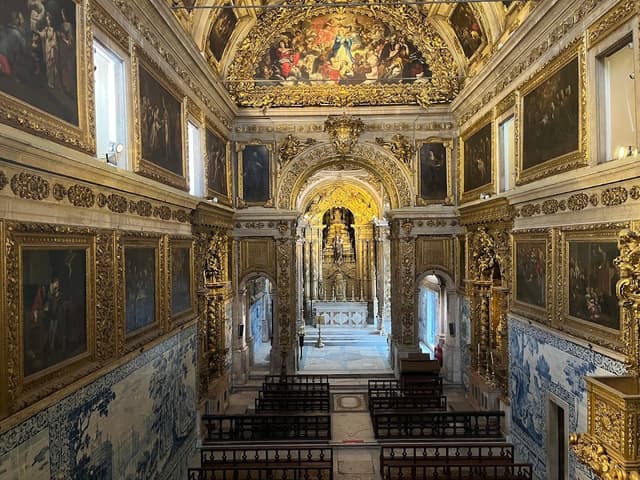
National Tile Museum
@_ariel_
Tile art is a common feature throughout the Mediterranean, but only Lisbon has a museum exclusively dedicated to it. It’s a must-see, one-of-a-kind attraction, housed in a magnificent old convent from 1509, and with a collection featuring pieces going back to the 1400s. It explains the origins and evolution of the art in Portugal, which ended up being the country with the vastest and most innovative uses of tiles.
Add to
Details
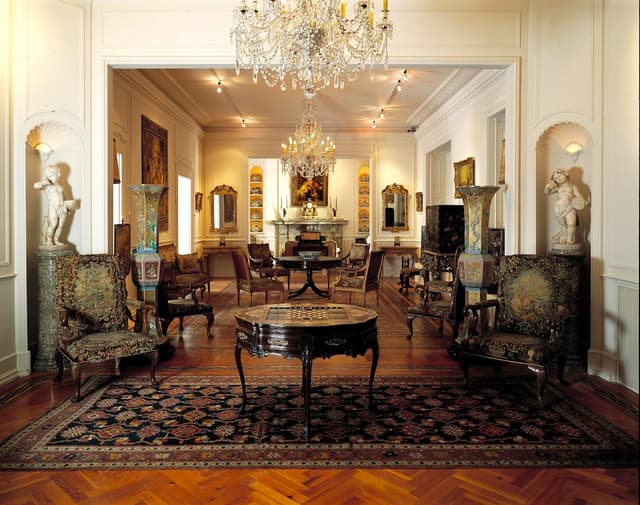
Medeiros and Almeida Museum
@_ariel_
The Casa-Museu Medeiros e Almeida is one of the most important Portuguese private decorative arts collections, gathered by the businessman, collector, and benefactor António Medeiros e Almeida.
Add to
Details

LX Factory
@_ariel_
Once an old industrial textile complex, LX Factory is now home to Lisbon’s trendiest restaurants, bars, and shops. Located beneath the Ponte de 25 Abril Bridge, the revitalized hotspot resembles a village where you can walk down cobbled streets and admire the street art adorning the walls of old warehouses. Here, you can dine in a former industrial canteen, shop at a multi-story bookstore, watch artists at work in their ateliers and studios, catch a live performance or exhibition, and more. On the weekend, stop by the open-air flea market which sells everything from handmade jewelry to vintage clothing.
Add to
Details

Buy to unlock full guide
Access all the local insights and recommendations from @_ariel_ when you purchase this guide.
What's included
Digital Map
Fully interactive, digital map for finding places nearby
42 places
42 hand-picked places with notes from the creator
DESTINATION(S) COVERED
Lisbon, Portugal
FOCUSES AND THEMES
50+
Business
Car-free
Female Solo
Digital Nomads
Family
Architecture
Art
Boutique
Design
Foodie
History
Luxury
People & Culture
Photography
Romantic
Relaxation
Wine
Shopping
Coffee
Format
Map
Maps are simple lists of places often grouped by themes, categories or geos.
COMMON QUESTIONS
What is Thatch?
Thatch is an online marketplace that provides instant access to thousands of vetted local experts and premium travel guides - making it the easiest and most affordable way to take high quality trips with less stress.
For travel creators (tastemakers, travel advisors, influencers and local experts) Thatch makes it easy to curate, publish, and sell digital travel guides, itineraries and personalized planning services.
What if I’m not satisfied with my purchase?
How do I access my purchased guides?
Can I access my guide offline?
How often are guides updated?
Can I request a personalized guide or itinerary?
Can I sell my own travel guides and itineraries?
Save for Later
Share